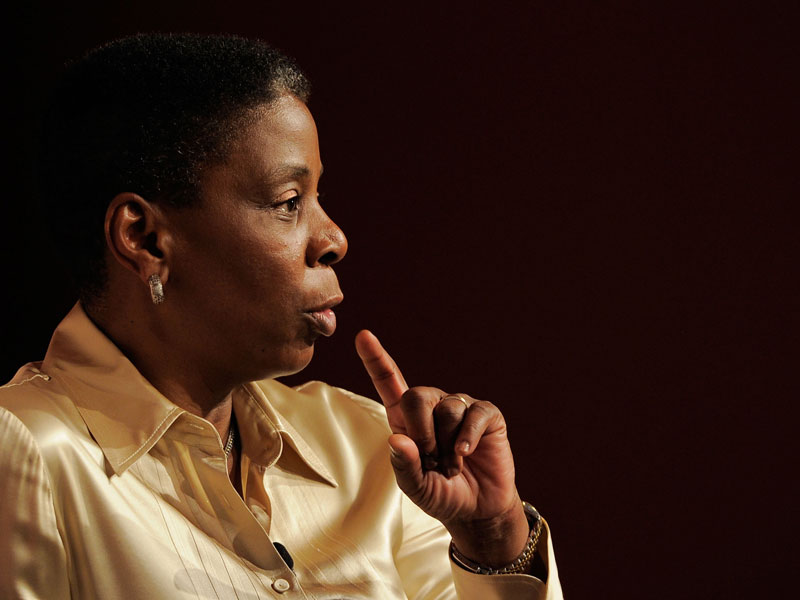When Burns took up the helm of Xerox, she undertook the task of turning around a company that was losing its mojo
Founded in 1906, the company had become, by the 1960s, synonymous with one of its inventions: the photocopier. Just like FedEx – and much later, Google – Xerox had the rare privilege of having its brand name enter the daily lexicon of ordinary people, especially in the US. Even today, many Americans use the verbs ‘photocopy’ and ‘xerox’ interchangeably. As Burns would explain later, this was a double-edged sword, potentially hindering the company’s evolution as times were changing.
The company’s success had been based on a research-driven strategy. The gem of the company’s research and development operations was the famous Palo Alto Research Centre (PARC). Many ideas and devices that are widely used today in personal computing, including graphical user interfaces, laser printers, Ethernet cables, the computer mouse and even the very idea of desktop computing, were first conceived in a PARC lab.
As often happens in legacy companies that have found a goose that lays golden eggs, Xerox’s executives would dismiss many of these ideas as irrelevant or not commercially viable. Not unlike Kodak, the company that invented the digital camera only to let competitors commercialise it, Xerox was digging its own grave. In many cases, the company’s researchers would share their findings with two fledgling tech companies that would later spearhead the personal computing boom: Apple and Microsoft.
There was a price to be paid for such complacency. Despite its early advantage, Xerox would never become a major tech manufacturer with a devoted global base of customers, such as Apple. However, it would remain for many decades the leader in the market the firm had created itself: photocopying and printing technology.
But by the mid-1990s, even that advantage had been lost. Like many other US companies at the time, Xerox’s products were threatened by state-of-the-art devices produced by Japanese competitors such as Canon and Ricoh. Xerox was facing an existential crisis that would spark organisational mayhem, including frequent leadership changes and an ill-conceived revamp of the sales department. To top it all off, Xerox was being investigated by the Securities and Exchange Commission for its accounting practices – an excruciating process that required a negotiated settlement to eventually solve. Some analysts went as far as suggesting that the company might have to file for bankruptcy.
Despite its early advantage, Xerox would never become a major tech manufacturer with a devoted global base of customers, such as Apple
In the early 2000s, it was more than obvious that Xerox was failing to catch up with other tech companies in an era of rapid digital transformation. If Microsoft had Windows and Intel had processors, Xerox was still identified in people’s minds with outdated devices: photocopiers and fax machines. Revenues were dropping as printing was gradually being replaced by emails and texting via mobile phones.
In her capacity as Xerox’s new CEO, Burns saw it as her mission to move the company away from what it knew best. Back in 2001, she had been part of a small group of executives who had saved the company from bankruptcy and pushed for diversification, particularly in business processing services. As the company’s head, she now had the opportunity to implement these ideas at full scale. Her engineering instincts, along with her many decades of experience at the company, pushed her to focus on the development of new products and services. To implement the plan, the company had to expand through mergers and acquisitions. Under Burns’ leadership, Xerox acquired ACS, an IT outsourcing services company, for $6.4bn in 2009.
Research at PARC started focusing on software that would make business processes faster and more efficient via AI technology. Many new ideas originated from the Xerox Research Centre Europe in Grenoble, a research hub that was founded in 1993 to prepare the company for a future where its devices would no longer be an office staple. This time had come: Xerox machines had to become smarter and faster to adjust to a new era. They would need to automatically scan, understand and analyse languages, photos and all sorts of data, which ACS had plenty of, from parking patterns and traffic data to healthcare payments.
Xerox was gradually turning from a hardware company into a software-orientated one. It was a rapid transformation that Burns enthusiastically spearheaded, in a way slowly killing the firm she had served for decades and had also come to adore. She would comment in her interview with Fast Company: “Look, it’s cool to be Google… but even Google has to close their books and pay their people.”
A woman of the people
Burns oversaw this radical transformation with a knack for engaging with people, a skill she had picked up from Mulcahy. As she told Fast Company, she had become a “listener-in-chief”, curbing her inherent tendency to speak her mind without taking into account the impact her words could have on other people. As she turned the company – or at least part of it – from a manufacturer to a business services provider, she also reinvented herself. A doer had now become a thinker and a people’s manager who could inspire and lead.

Not every part of the process was smooth, though. Burns had to make difficult decisions, such as cutting a significant part of Xerox’s workforce and outsourcing parts of its operations. By the time she stepped down as CEO in 2016, Xerox had massively grown its business process services, an operation that would later split from the main company. Burns would remark on the difficulty of turning around a big corporation in a 2018 interview with Yale Insights: “What we have to do, particularly the leadership team, is remember the things that were really great about the company but be willing to throw it all out and create a new self… This is where leadership comes in. It’s a delicate balance to try to tear down good things.”
Under Burns’ leadership, the company continued to post impressive revenue figures (
see Fig 1
), but in 2016, with Xerox’s transition to the new era complete, it was time for her to leave the company she had served for 36 years. She wanted to avoid what she called “the seven-year itch” and, as she remarked in an interview with
Fortune
several years earlier: “Success is not about money. It’s not about power. It’s about leaving.”
This is a lesson she had learned from her mother: “She would always say that you have to leave the place – any place you are – a little bit better than you came in.”
The trailblazer
Throughout her career, Burns rarely, if ever, exploited her difficult upbringing or played the ‘race card’ – always a difficult subject in the US. And yet, as the first female African American CEO of a Fortune 500 company, her story was a landmark in American corporate history. US media hailed her appointment as a historic moment, drawing parallels with the unexpected rise of Barack Obama, who had become the first African American president just a few months previously.
Throughout her career, Burns rarely, if ever, exploited her difficult upbringing
Black, well-educated, ambitious and raised by a single mother, Burns shares a lot of traits with the 44th US president. As Obama, Burns wears her race – and, in her case, her gender too – as a badge of honour rather than a label to be used for self-promotion. As DeFrank-Cole told
World Finance
: “Marian Wright Edelman once said, ‘You can’t be what you can’t see’, and I think this quote is appropriate when describing the impact of Ursula Burns. As the first black woman to serve as CEO of a major corporation, she has not only made history, but has given hope and inspiration to many girls who may want to follow her path. She has become a role model for women, and especially women of colour, around the world.”
Despite increasing awareness of the importance of gender equality and diversity in the corporate world, African American women still find it difficult to climb to the top ranks of big companies. Currently, just 27 of the CEOs of Fortune 500 companies are women – and none of those an African American. DeFrank-Cole said: “Women, and women of colour specifically, still face both explicit and implicit bias. Some people see incongruity when they imagine a black woman as a leader. There are too many old tropes about strong, black women that, unfortunately, still live in the minds of ordinary citizens and corporate executives alike. This mindset accounts for black women not being interviewed or selected for high-level leadership roles.”
Having a committed mentor on their side is an important asset for African American women aspiring to become business leaders. Burns’ own career took off when she found her mentor in Wayland Hicks. During a company meeting in 1989, the issue of diversity came up, and one employee asked the executives if the push for more diversity would result in lowering recruitment standards. Hicks, attending the meeting as one of the company’s senior executives, answered in a way Burns later described as “nonchalant”. Irritated, she asked Hicks why he did not challenge the rationale behind the question. The incident did not go unnoticed: Hicks was impressed by Burns’ fearfulness, seeing in her a potential leader for a company that was still stuck in the old ways of doing things.
Although 10 years have passed since her appointment as CEO, its impact on equality in the top echelons of US companies remains unclear. More companies may follow Xerox’s example in the future, DeFrank-Cole hopes: “Now other companies may look at Xerox as an example of how to make diversity and inclusivity a priority – not just with workshops and training, but by hiring a diverse CEO.” However, not much has changed since 2009.
Currently, there are only three African Americans heading Fortune 500 companies, and all three are male. Paolo Gaudiano, founder and CEO of Aleria, a US consultancy focused on diversity in the corporate world, told
World Finance
: “Sadly, in terms of boardroom diversity and equality, her appointment had no impact. One reason for the lack of boardroom diversity is that the data showing that companies with diverse boards perform better is only showing a correlation, which means that people can choose to believe, or not, that the increase [in] performance is caused by the diversity.”
Gaudiano added: “Even if you believe that it is in fact the diversity that is driving performance, that knowledge does not help you to understand how to go about making boards more diverse. Should you fire half the board in one fell swoop, or spread it out over time? Do you need to have accurate representation that matches the population, or is it enough to add a few ‘token’ individuals? Being unable to answer these questions is preventing even those with good intentions from taking decisive action.”
Just one pioneer who can break barriers, as Burns did, can make a difference, Gaudiano noted: “There is a bit of a vicious cycle: having a more diverse leadership is likely to make a company more inclusive, and thus more likely to attract diverse talent.” He added: “It’s ironic when you think that companies know how to diversify their inventory, their marketing campaigns, their supply chains and their financial assets, but they can’t figure out how to diversify their human capital, which is the most valuable asset and most expensive budget item for virtually every company.”
It’s a man’s world
Of all the hurdles Burns had to overcome throughout her career, perhaps the hardest one was being a female engineer in an industry with a strong male-dominated culture. Data from various surveys show that women are less likely to pursue a career in STEM (science, technology, engineering and maths) subjects and are more likely than men to leave such a career early, both in the US and globally. DeFrank-Cole said: “When girls find themselves in STEM majors in college, depending on the field, they may be one of only a handful of females.
210m
Number of VEON customers
3
Number of African Americans currently heading Fortune 500 companies
“Chemical engineering or computer science majors, for example, do not have many women in them. If a young woman is struggling, she appears to be weak, and may be shunned by other students. She may be thought of as representing her entire gender with a few bad grades, and therefore all women would be deemed incapable (incorrectly, of course) of pursuing these fields in the minds of her male peers.”
Work culture matters too, according to DeFrank-Cole: “Even if a female [student] has strong grades, she still may be left out of some group camaraderie due to being one of only a few females. When she makes it to her first or second job, she starts to tire of the male-centred work environment. She will continually try to prove herself and possibly be overlooked for promotions. She will face microaggressions of a small comment here or an inappropriate joke there that add up to ‘death by a thousand cuts’. Life is too short to work in an environment that is unsupportive, so many women leave STEM careers.”
As one of the most successful female engineers in the history of US manufacturing, Burns is determined to change this culture by promoting the merits of STEM education, particularly for women. She is a founding director of
Today, she never misses an opportunity to stress how rewarding a STEM career can be. In a recent interview with TIME Firsts, she remarked: “I say this to women all the time, particularly women trying to get into STEM. I guarantee you will be the minority in the room.” She added: “And instead of that being a burden, it should be an opportunity for you to distinguish yourself.”
A bright future
Unlike other CEOs who left the spotlight after stepping down, Burns has not retired. She has served as board director of American Express, Diageo, Uber, the National Academy Foundation, MIT and the US Olympic Committee.
No matter what Burns does for the rest of her life, she already has a place in US history
Not surprisingly, her name has been floated for various positions in public life. Her involvement in Obama’s close circle of informal advisors, including business leaders such as JPMorgan Chase CEO Jamie Dimon and former General Electric CEO Jeff Immelt, has sparked rumours that she could be a candidate for cabinet positions normally reserved for people from the corporate realm, such as secretary of commerce. Not a person with a knack for public relations, however, Burns has dismissed the possibility of being involved in politics, telling Fast Company: “Things move too slowly in government.”
Her latest venture in the corporate world brought her for the first time to the helm of a non-US company. In December, she was named CEO of VEON, a multinational telecommunications services company headquartered in Amsterdam. With more than 210 million customers, the firm is the 11th-biggest mobile network operator in the world.
No matter what Burns does for the rest of her life, she already has a place in US history. She may not be Rosa Parks, inadvertently starting a revolution, but she is a symbol for American capitalism nevertheless: a role model representing a minority within a minority, serving as a guiding light for young women facing hardship and bias. As she recently noted in an interview with
Time
magazine: “All of us now are pioneers. Every one of us.”
post-navigation" role="navigation" aria-label="Posts">











